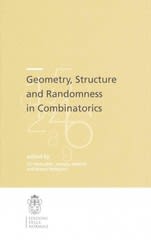Question
Exercise 3 Step 1. Test Set-up Chris P. Bacon is the newly hired Director of Development at Nunya Business College. She hopes that her new
Exercise 3
Step 1. Test Set-up
Chris P. Bacon is the newly hired Director of Development at Nunya Business College. She hopes that her new direct mail campaign for alumni donations will getmore than 15% of the alumni to donate money to their alma mater.
She decides to test the new campaign using a 5% significance level. She selected a random sample of 200 alumni, 38 alumni contributed money to the college. Research Question:Is there sufficient evidence to support the idea that the new direct mail campaign will yield more than a 15% response rate?
What test statistic should you use and why?(There are three basic one-sample hypothesis tests: 1) z-test for the population mean, 2) z-test for the population proportion, and 3) t-test for the population mean.)
Based on the research question is this a left-tailed, two-tailed, or right-tailed test?
Step 2. Select the Level of Significance,
A 5 percent significance level has been selected.
| What is the Critical Value of Values of the Test Statistic? |
Step 3. State the null hypothesis (H0) and alternate hypothesis (H1)
| H0: | |
| H1: |
Follow the examples shown in Clear-Sighted Statistics.You must use the appropriate Greek letters and mathematical symbols.
| = | > | < | |||
| 2 | 2 | 2 |
Step 4. Compose the decision rule using critical values not p-values. Follow the examples shown in Clear-Sighted Statistics.
Step 5. Calculate the Value of the Test Statistic, p-value, Effect Size, Statistical Power and the Probability of a Type II Error
Step 6: Decide and Report. Your report show cover what your findings mean, whether the test has practical significance, and whether the test has sufficient statistical power or is under or over powered.Do not use the personal pronoun "I" in your report.
Excell format
| Significance level, | 0.05 | Given | H0: | |||
| Critical Value, z | =ABS(NORM.S.INV(B1)) | H1: | ||||
| Decision Rule | ||||||
| x | 38 | Given | ||||
| n | 200 | Given | ||||
| p | =B4/B5 | |||||
| 0.1500 | Given | |||||
| Effect Size = SEP | ||||||
| SEP: SQRT((1 - )/n) | =SQRT((B7*(1-B7)/B5)) | |||||
| Effect Size | =IF(B9>=E14,"Large",IF(B9>=E13,"Medium",IF(B9>=E12,"Small","Negliigible"))) | |||||
| z | =(B6-B7)/B9 | Effect Size Thresholds | ||||
| p-value | =1-NORMSDIST(ABS(B11)) | Small | 0.10 | |||
| Medium | 0.20 | |||||
| p @ CV | =B7+(B2*B9) | Large | 0.50 | |||
| P(Type II) | =NORM.DIST(B14,B6,B9,TRUE) | |||||
| Statistical Power | =1-B15 | |||||
Step by Step Solution
There are 3 Steps involved in it
Step: 1

Get Instant Access to Expert-Tailored Solutions
See step-by-step solutions with expert insights and AI powered tools for academic success
Step: 2

Step: 3

Ace Your Homework with AI
Get the answers you need in no time with our AI-driven, step-by-step assistance
Get Started


